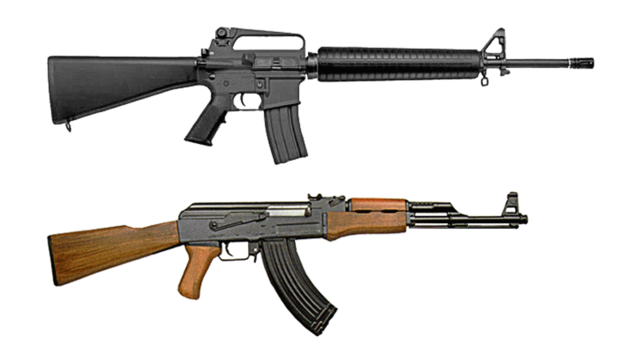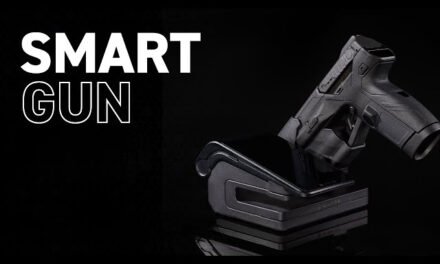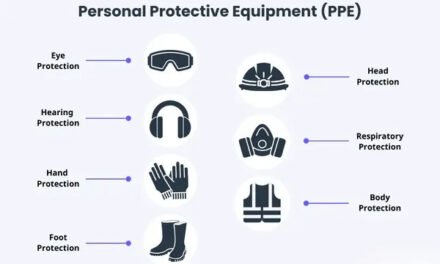The manufacturing process for military-grade firearms differs from civilian firearms in several key areas, primarily due to the different performance, durability, and regulatory requirements for each. Here’s a breakdown of the differences:
1. Design and Performance Specifications:
- Military Firearms: Military firearms are designed for extreme conditions, including rapid firing, exposure to harsh environments, and heavy usage. The design focuses on durability, reliability, and functionality under stress. This requires materials and components that are able to withstand high rates of fire, recoil, and environmental factors like dirt, water, and corrosion.
- Tolerance and Precision: Military firearms are built to much stricter tolerances to ensure they function effectively in combat situations. They may also incorporate features like adjustable gas systems, reinforced parts, and more robust components.
- Civilian Firearms: While civilian firearms must also be durable and reliable, the focus tends to be on comfort, accuracy, and ease of use rather than the ability to perform under combat conditions. Civilian models might not be built to handle the same rate of fire or extreme wear as military firearms. Civilian firearms also tend to prioritize features like aesthetics, ergonomics, and lightweight designs.
2. Materials and Durability:
- Military Firearms: Higher-strength materials are used to enhance durability. This often includes high-grade steel alloys, titanium, and mil-spec coatings (such as phosphate or Cerakote) to prevent corrosion, reduce wear, and extend service life. Parts are made to endure frequent disassembly, cleaning, and reassembly without degrading performance.
- Civilian Firearms: Civilian firearms might use less expensive materials like regular steel, aluminum, and polymers, which are still durable but generally do not undergo the same level of treatment or reinforcement as military-grade materials. The focus is more on cost-effectiveness, and some components may not be as reinforced as military counterparts.
3. Manufacturing Techniques:
- Military Firearms: The manufacturing process for military-grade firearms typically involves more stringent quality control and often utilizes specialized equipment for mass production. Cold hammer forging is frequently used for barrel manufacturing, providing a superior level of precision and longevity. Components such as the receiver and bolt are often milled from a solid billet of metal, ensuring maximum strength and durability.
- Automation: Military production is often automated to ensure uniformity and speed, as large quantities of weapons need to be produced for armed forces. The parts must meet strict military standards (such as MIL-SPEC) for performance and reliability, and they undergo extensive testing, including stress testing, endurance testing, and environmental testing (e.g., sand, saltwater, temperature extremes).
- Civilian Firearms: While civilian firearms are also built with attention to quality, the manufacturing process may not be as intense or automated, especially for boutique or custom firearms. They might use methods like button rifling for barrels or casting techniques for receivers and other parts, which are suitable for producing firearms in smaller quantities at a lower cost.
- Less Rigorous Testing: Civilian firearms may undergo quality checks, but they often don’t face the extreme testing or approval processes required for military weapons. The need for combat-ready performance in various environments is not as demanding.
4. Customization and Features:
- Military Firearms: Military firearms are often designed to be highly customizable for different operational roles, and as a result, modularity is a key feature. For example, modern military firearms like the M16/M4 platform are designed to accept a variety of attachments, including scopes, lights, grips, and suppressors. They are built to be adaptable to a wide range of combat situations, which requires robust customization options.
- Civilian Firearms: While civilian firearms can also be customized, there are generally fewer options for modifications due to legal and regulatory restrictions, especially in the case of semi-automatic vs. fully automatic firearms. Some civilian firearms, like AR-15-style rifles, offer a high degree of customization in terms of stocks, sights, and accessories, but they will often lack the military-grade durability or modularity in certain areas.
5. Firing Mechanism:
- Military Firearms: Military-grade firearms are often capable of selective fire, meaning they can be switched between semi-automatic, burst, or fully automatic modes. The design of the internal mechanism is tailored to withstand the heat, stress, and wear associated with automatic firing over extended periods. The gas-operated systems are often more robust to handle sustained firing.
- Civilian Firearms: Most civilian firearms are semi-automatic only, firing one round per trigger pull. This simpler firing mechanism reduces the need for the durability features required for automatic fire. In countries like the United States, fully automatic firearms are heavily regulated and generally unavailable to civilians, so civilian designs focus on semi-automatic operation for both safety and regulatory compliance.
6. Regulatory and Legal Constraints:
- Military Firearms: Military firearms are designed and manufactured to meet the specific requirements of national defense agencies. These firearms often undergo classified military testing and compliance with national and international defense standards. Security clearances and regulations govern their design and distribution.
- Civilian Firearms: Civilian firearms are subject to local laws and regulations, which vary widely by country and even by state within countries. Firearm designs must comply with civilian safety standards, such as features like manual safeties, trigger pulls, and caliber limits. In many cases, civilian firearms may also be restricted in terms of magazine capacity, barrel length, and overall design features.
7. Cost and Production Scale:
- Military Firearms: Military firearms are often produced in large quantities and benefit from economies of scale, which can reduce the unit cost despite the more expensive materials and rigorous manufacturing processes. However, the overall design and production are highly specialized, aimed at producing a weapon that is suited for prolonged, intensive use.
- Civilian Firearms: Civilian firearms are produced in smaller quantities compared to military weapons, with some manufacturers focusing on boutique or custom firearms for hunting, sport shooting, or self-defense. As a result, the cost per unit can be higher for civilian firearms, and they may feature more premium materials, specialized finishes, or customizations.
Conclusion:
The primary difference between military and civilian firearm manufacturing lies in the intended use, performance requirements, and regulatory constraints. Military firearms are designed to endure combat conditions and rapid firing cycles, requiring superior materials, durability, and precision. Civilian firearms, while still needing to be reliable, focus more on user comfort, cost-effectiveness, and adherence to local legal standards. The manufacturing processes reflect these differences, with military-grade firearms built for high endurance, and civilian firearms often offering more variety and customization options.
Hashtags
#FirearmManufacturing #MilitaryVsCivilian #WeaponEngineering #GunTechnology #FirearmIndustry #MilitaryWeapons #TacticalFirearms #DefenseManufacturing #BattlefieldTech #CombatReady #SportShooting #GunCustomization #CivilianFirearms #HuntingGear #FirearmInnovation #CNCPrecision #MetallurgyEngineering #BallisticPerformance #AdvancedManufacturing #DefenseEngineering #GunSafety #ResponsibleOwnership













